Name Marion Griffin Role Architect | ||
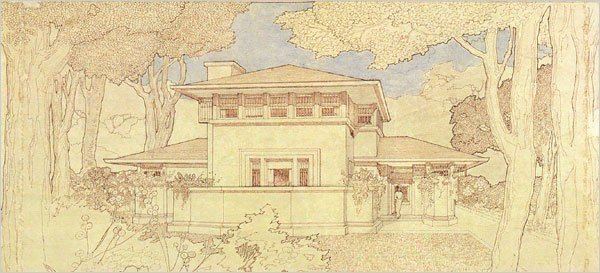 | ||
Died August 10, 1961, Chicago, Illinois, United States Parents Clara Hamilton, Jeremiah Mahony Similar People | ||
Annual marion mahony griffin lecture caroline pidcock the magic of australia
Marion Mahony Griffin (February 14, 1871 – August 10, 1961) was an American architect and artist. She was one of the first licensed female architects in the world, and is considered an original member of the Prairie School. During her life, she produced some of the best architectural drawing in America and was instrumental in envisioning the design plans for then new capital city of Australia, Canberra.
Contents
- Annual marion mahony griffin lecture caroline pidcock the magic of australia
- Walter burley and marion mahony griffin by shona reid
- Early life and education
- Work with Frank Lloyd Wright
- Work with Walter Burley Griffin
- Death and legacy
- Architectural work attributable in part or in full to Marion Mahony Griffin partial listing
- References
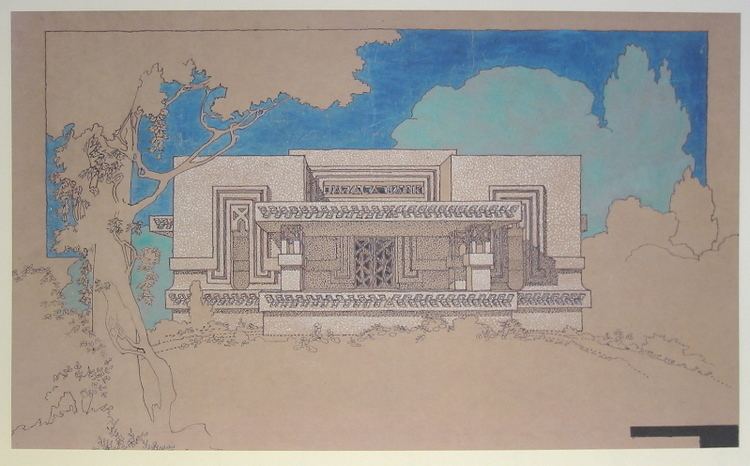
Walter burley and marion mahony griffin by shona reid
Early life and education
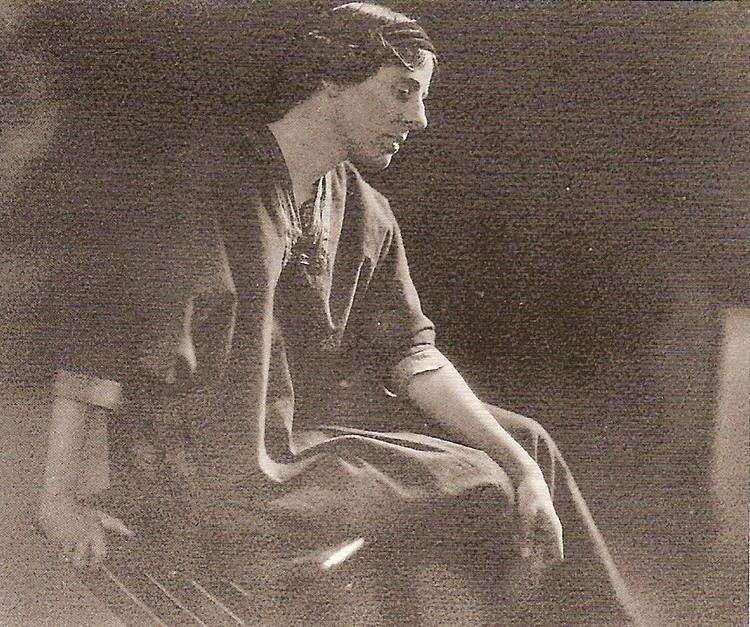
Marion Mahony Griffin was born in 1871 in Chicago, Illinois, the second child and eldest daughter of the five surviving children of Jeremiah Mahony, a journalist from Cork, Ireland, and Clara Hamilton, a schoolteacher. Her family moved to nearby Winnetka after the Great Chicago fire. Growing up there, she became fascinated by the quickly disappearing landscape as suburban homes filled the area. She was influenced by her first cousin, architect Dwight Perkins, and decided to further her education. She graduated from the Massachusetts Institute of Technology (M.I.T.) in 1894. She was one of the first women to receive a degree in architecture. Though highly talented, she sometimes struggled with her place in both society and the field. She was unsure of her ability to complete the thesis required for her bachelor's degree, but her professor, Constant-Désiré Despradelle, pushed her forward.
Work with Frank Lloyd Wright
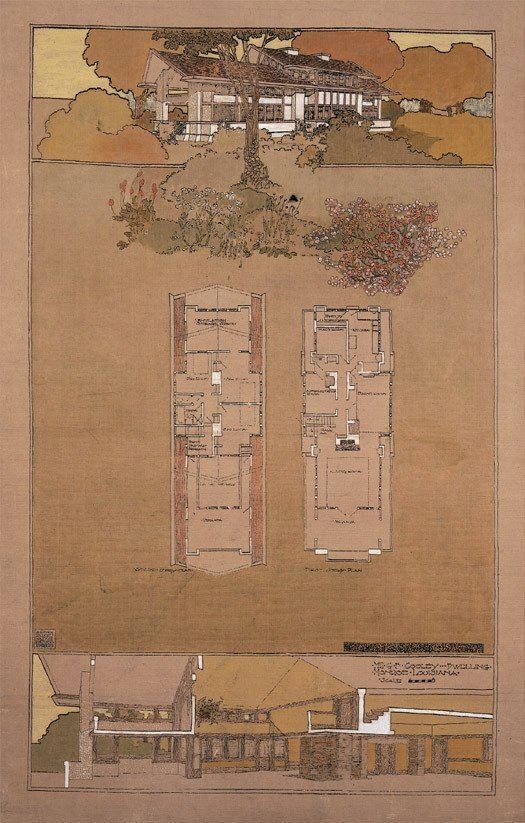
After graduation, Mahony worked in her cousin's architecture firm, which was located in Steinway Hall at 64 E. Van Buren in downtown Chicago. The space was shared with many other architects, including Robert C. Spencer, Myron Hunt, Webster Tomlinson, Irving Pond and Allen Bartlitt Pond, Adamo Boari, Birch Long and Frank Lloyd Wright. In 1895, Mahony, the first employee hired by Frank Lloyd Wright, went to work designing buildings, furniture, stained glass windows and decorative panels. Her beautiful watercolor renderings of buildings and landscapes became known as a staple of Wright's style, though she was never given credit by the famous architect. Over a century later she would be known as one of the greatest delineators of the architecture field, but during her life her talent was seen as only an extension of the work done by male architects. She would be associated with Wright's studio for almost fifteen years and was an important contributor to his reputation, particularly for the influential Wasmuth Portfolio, for which Mahony created more than half of the numerous renderings. Architectural writer Reyner Banham called her the "greatest architectural delineator of her generation". Her rendering of the K. C. DeRhodes House in South Bend, Indiana was praised by Wright upon its completion and by many critics.
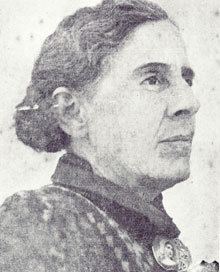
Wright understated the contributions of others of the Prairie School, Mahony included. Unfortunately, the views of most architectural historians from the 1950s to 2000 follow Wright's lead. A clear understanding of Marion Mahony’s contribution to the architecture of the Oak Park Studio comes from Wright’s son, John Lloyd Wright, who says that William Drummond, Francis Barry Byrne, Walter Burley Griffin, Albert Chase McArthur, Marion Mahony, Isabel Roberts and George Willis were the draftsmen—the five men and two women who each made valuable contributions to Prairie style architecture for which Wright became famous. During this time Mahony designed the Gerald Mahony Residence (1907) in Elkhart, Indiana for her brother and sister-in-law.

When Wright eloped to Europe with Mamah Borthwick Cheney in 1909, he offered the Studio's work to Mahony. She declined. But after Wright had gone, Hermann V. von Holst, who had taken on Wright's commissions, hired Mahony with the stipulation that she would have control of design. In this capacity, Mahony was the architect for a number of commissions Wright had abandoned. Two examples were the first (unbuilt) design for Henry Ford's Dearborn mansion, Fair Lane and the Amberg House in Grand Rapids, Michigan.
Work with Walter Burley Griffin
Mahony recommended Walter Burley Griffin to von Holst to develop landscaping for the area surrounding the three houses commissioned from Wright in Decatur, Illinois. Griffin was a fellow architect, a fellow ex-employee of Wright, and a leading member of the Prairie School of architecture. Mahony and Griffin worked on the Decatur project before their marriage; afterwards, Mahony worked in Griffin's practice. A Walter Burley Griffin/Marion Mahony designed development that is home to an outstanding collection of Prairie School dwellings, Rock Crest – Rock Glen in Mason City, Iowa, is seen as their most dramatic American design development of the decade. It is the largest collection of Prairie Style homes surrounding a natural setting.
Mahony and Griffin married in 1911, a partnership that lasted 28 years. Marion's watercolor perspectives of Walter's design for Canberra, the new Australian capital, were instrumental in securing first prize in the international competition for the plan of the city. In 1914 the couple moved to Australia to oversee the building of Canberra. Marion managed the Sydney office and was responsible for the design of their private commissions. They pioneered the Knitlock construction method, inexactly emulated by Wright in his California textile block houses of the 1920s.
Later the Griffins practiced in India and, in less than a year, Mahony oversaw the design of over one hundred Prairie School influenced buildings there. Walter Griffin died in India in 1937 of peritonitis following a cholecystectomy. Mahony then completed their work and returned to Australia. Mahony and Griffin spread the Prairie Style to two continents, far from its origins. She credited Louis Sullivan as the impetus for the Prairie School philosophy. She thought Wright's habit of taking credit for the movement explained its early death, in the United States.
Death and legacy
Marion Mahony Griffin died in Chicago, aged 90. Though she lived 24 years after her husband's death, she did little in her elderly years to further advance her own architectural career. "The one time she addressed the Illinois Society of Architects, she made no mention of her work, instead lectured the crowd on anthroposophy, a philosophy of spiritual knowledge developed by Rudolf Steiner."
She is buried in Graceland Cemetery, Irving Park Road & Clark Street, Chicago, with other noted architects: David Adler, Louis Sullivan, Daniel H. Burnham, Bruce Goff, William Holabird, Howard Van Doren Shaw and Ludwig Mies van der Rohe.
In 2015, the beach at Jarvis Avenue in Rogers Park, Chicago was named in Mahony Griffin's honor. When she returned to the United States in 1939, after her husband's death, she lived near the beach. The Australian Counsel General, Roger Price, attended the beach's dedication for the woman who was instrumental in the design the Australian capital.
An exhibition of some of her work was held at the Block Museum of Northwestern University in 2015. In 2016-17, an exhibit of her work is on display at the Elmhurst History Museum.
